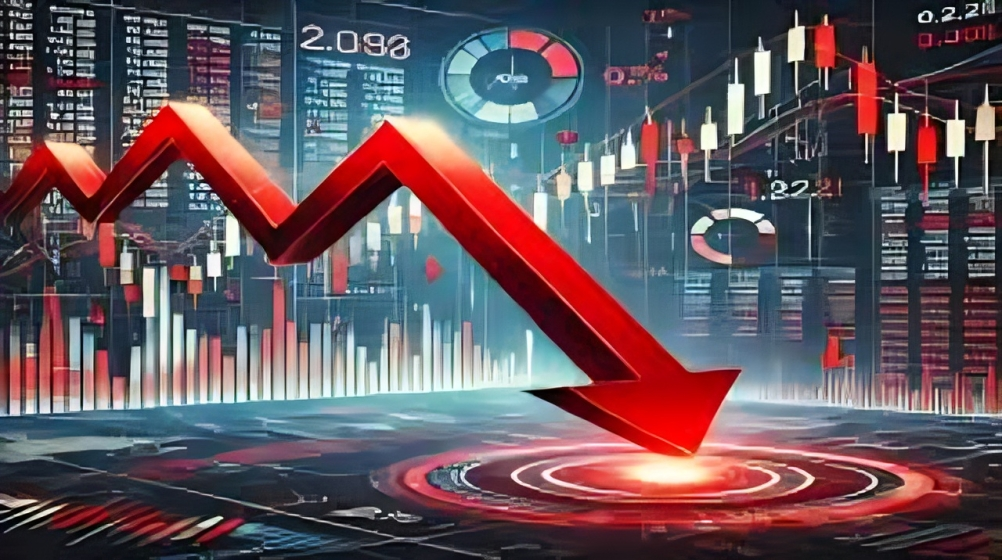After facing turbulence earlier in June, the Indian stock market made a remarkable comeback in the second half of the month. The Nifty 50 and Sensex have surged significantly, brushing close to their all-time highs, backed by a mix of global easing, crude oil correction, and renewed investor optimism.
From Lows to Highs: June’s Market Journey
On June 13, Indian indices witnessed sharp drops as Israel attacked Iranian nuclear sites, causing geopolitical panic. On that day, the Nifty 50 plunged to a one-month low of 24,473, while Sensex fell to 80,250.
Fast forward to June 27, the Nifty has recovered 1,076 points (4.4%) to trade at 25,549, its highest level of 2025. The Sensex has also soared 3,505 points, reaching 83,755, now less than 2.6% away from its September 2024 peak of 85,978.
Crude Oil Crash Triggers Relief Rally
One of the primary catalysts behind this market surge is the sharp drop in crude oil prices, which followed the temporary ceasefire between Iran and Israel, brokered by the United States and Qatar on June 24.
Oil prices, which had spiked earlier in the week due to U.S. airstrikes on Iranian facilities, plummeted 11% by Thursday — marking their worst weekly drop in two years. Fears of supply disruption through the Strait of Hormuz, a key oil transit chokepoint, were temporarily put to rest.
India, being a major oil importer, responded positively. The correction in oil prices is expected to ease import bills, fiscal deficit pressures, and inflationary concerns, thereby improving sentiment across equity markets.
Dollar Weakness Spurs Foreign Inflows
Another strong tailwind for the markets is the continued weakness in the U.S. dollar. The Dollar Index fell to a three-year low of 97 this week, amid growing expectations that the U.S. Federal Reserve may accelerate rate cuts in the coming months.
Speculation is rife that President Donald Trump may announce his pick for the next Fed Chair by September or October, paving the way for a more dovish monetary outlook.
A softening dollar typically supports emerging markets like India, as it lowers global commodity costs and triggers foreign portfolio inflows. Indeed, FIIs (foreign institutional investors) have been net buyers for the fourth consecutive week.

Large-Cap Resilience Leads the Charge
Despite high valuations and stretched mid- and small-cap stocks, nifty large-cap equities have seen a significant resurgence in June. Blue-chip companies in sectors like banking, IT, FMCG, and energy — many of which are part of the nifty — are leading the charge, as investors rotate capital into safer bets with strong balance sheets.
Broader markets, though volatile, also participated in the latest nifty-driven uptrend, driven by robust Q4 earnings, stable GDP projections, and a moderate inflation outlook from the RBI.
Global Risk Factors: Still Looming, but Dented
While geopolitical concerns remain unresolved, the temporary Iran-Israel truce has removed immediate fears of a full-blown regional war. Analysts note that the India–Iran oil linkage is minimal, insulating the country from direct crude supply disruptions.
Moreover, the Nifty market seems to have priced in risks associated with the India–US trade negotiations, which have been progressing slowly but steadily. According to reports, India is pushing for an extension of tariff exemptions under Trump’s reciprocal trade policy, which is currently set to end on July 9.
Negotiations are underway for a mini Bilateral Trade Agreement (BTA) between New Delhi and Washington, expected to be finalized by September 2025.
Expert Insights: Bull Market Still Intact
Dr. V.K. Vijayakumar, Chief Investment Strategist at Geojit Financial Services, remarked that the Indian market, particularly the nifty, continues to showcase extraordinary resilience.
“This is a classic case of the nifty climbing all walls of worry. From geopolitical risks and inflation to tariff threats and interest rate pressures — the nifty has absorbed it all and marched forward.”
He added that investors should watch the upcoming July 9th tariff deadline, though early signals suggest that President Trump may delay enforcement, which would be another positive trigger.
Domestic Strength Adds to Global Optimism
On the domestic front, the market has been buoyed by several factors:
- RBI’s steady policy stance and commentary on controlled inflation
- GST collection and tax data showing steady economic activity
- Monsoon forecasts indicating normal rainfall, supporting agriculture
- Continued DII (Domestic Institutional Investor) support
The combination of global tailwinds and local resilience is creating a fertile ground for further gains, say market strategists.
Natasha Poonawalla Steals the Spotlight at Bezos-Sanchez’s Glamorous Venice Wedding


[…] Indian Stock Market Nears Record Peak: Will Sensex and Nifty Break New Ground in 2025? […]